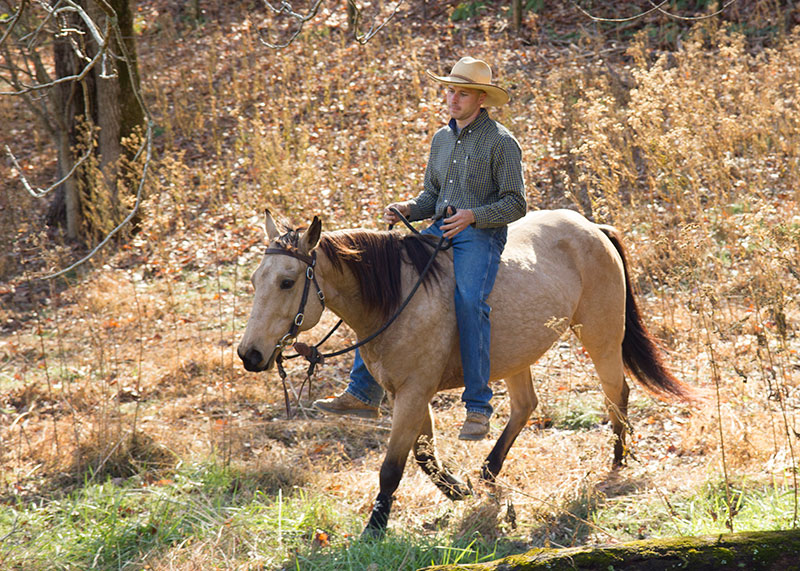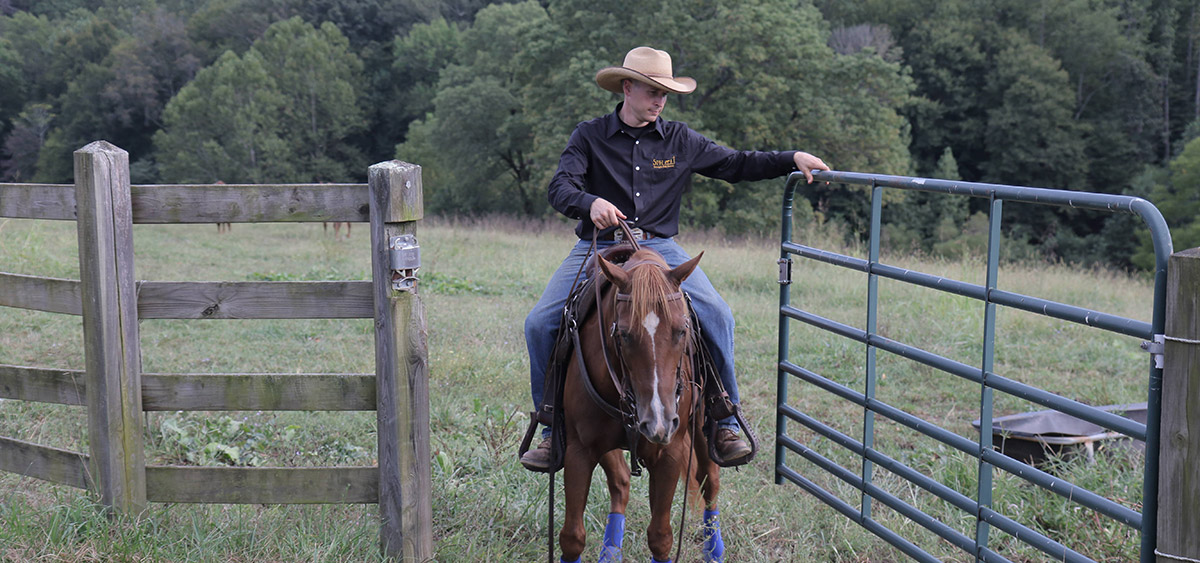Based in Southwest Virginia, we use natural horsemanship training to transform horses into willing partners.
What is Natural Horsemanship?
Natural horsemanship is a philosophy of working with the horse’s created nature to bring about mutual respect between horse and rider. Horses are herd animals and use body language to communicate. Horses learn from the release of pressure, which escalates as necessary in a herd to establish “pecking order.”
What Does the Process Look Like?
It may begin with just looking at the other horse, progress to walking toward the horse, pinning ears, increasing speed, and so on, until the other horse moves his feet. We use the horse’s nature as a spring board for training. For example, a rider would ask the horse to back up. He/she would begin by leaning forward toward the horse, and if the horse does not move, the rider would shake the lead rope or flag in front of the horse. You begin by asking the horse as if they are already perfectly performing this movement, and apply increasing pressure. The learning comes at the release of the pressure, so as the horse does what the rider is asking, all pressure is taken away: the person stands upright and stops shaking the lead rope or flag. As the horse learns to respond to the body language of the rider, the horse will only need the rider to lean forward to know that he wants him to back up.

Rewarding the slightest try is an important principle. During training, the rider must ask the horse to move this way or that and release as the horse makes a correct attempt. It may begin with the horse merely shifting their weight in the direction the rider is asking. As the horse learns the movement or exercise, the trainer asks the horse for more movement before rewarding with release of pressure.

Natural horsemanship stresses groundwork as a foundation for building respect, teaching the horse, and increasing safety for the rider. Ground work means “foundation.” With a solid foundation, a rider can build upon principles with continuing success. A good grasp of the basics is tantamount to good communication and relationship between the rider and the horse. By preparing your horse well on the ground, you are setting him up for success. The rider teaches their horse to respond to him/her on the ground, which makes your communication better in the saddle.

There is also an emphasis on feel and timing between the rider and the horse. A rider needs a keen sense of how the horse is responding (feel), and an ability to cue the horse at the right time to achieve the desired movement. These qualities continue to improve with both increasing experience and knowledge.
Learn more about our trainer, Whitney Sewell.
Give us a call at (270) 498-4333
OR

